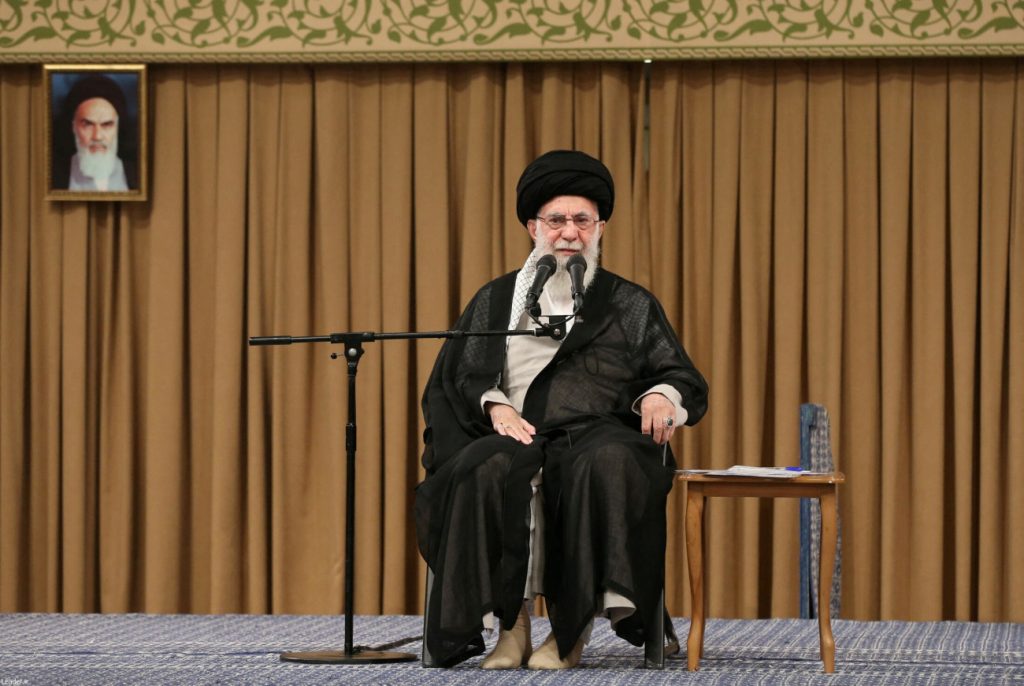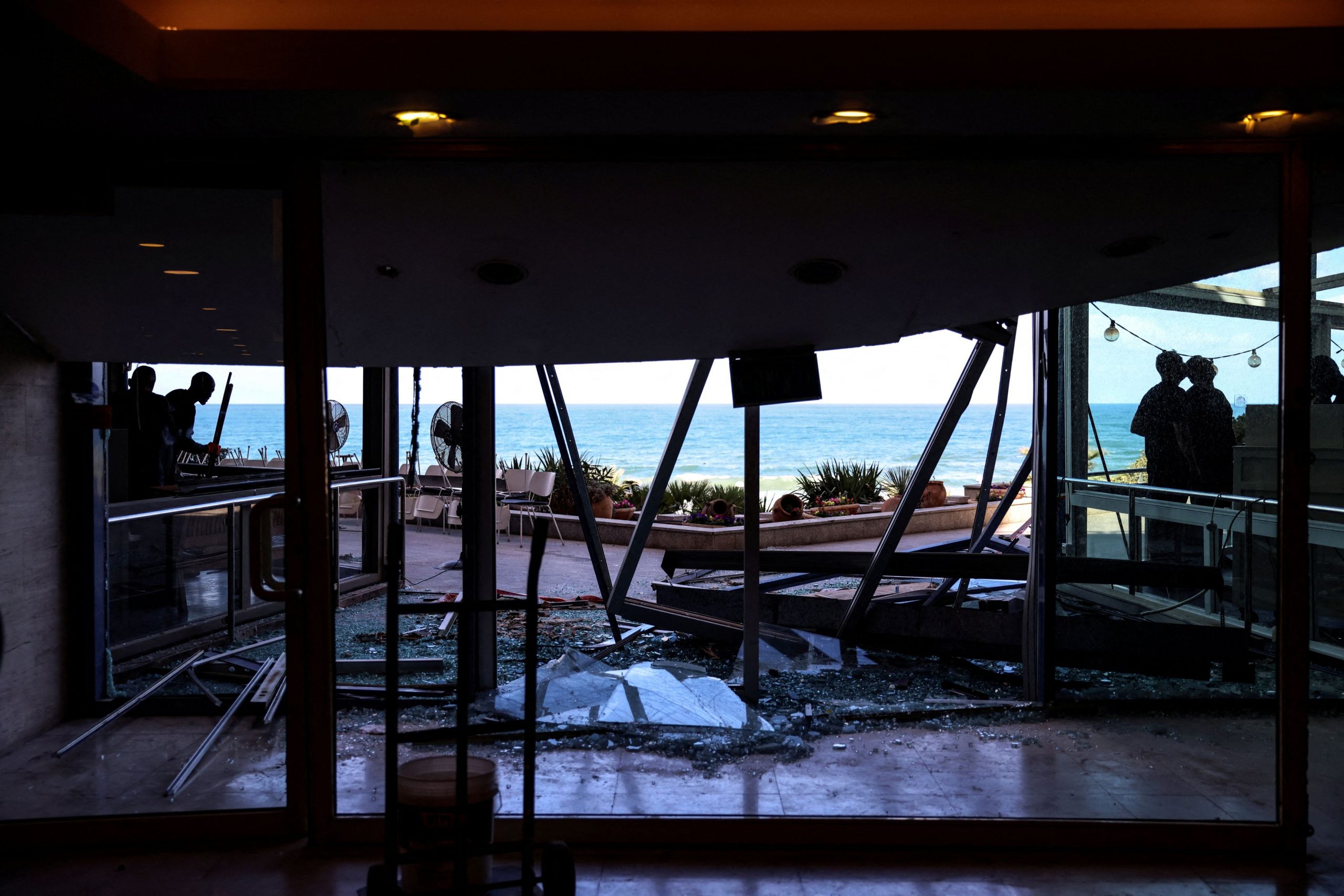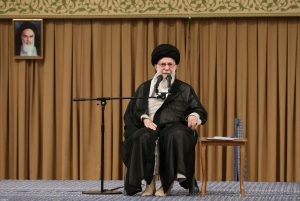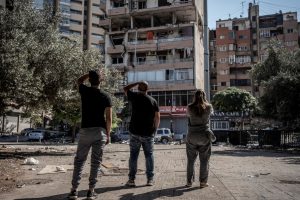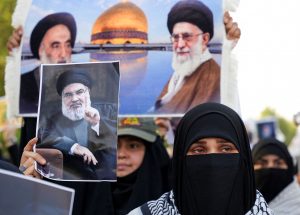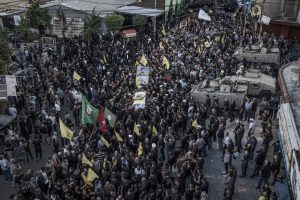TEL AVIV—An initial Israeli assessment Wednesday of the damage from roughly 180 missiles fired a day earlier by Iran indicated largely minor damage to dozens of houses and other civilian infrastructure in the country’s densely populated center and to a few military bases. The aerial attack has escalated a yearlong conflict in the Middle East.
Israel said its air defenses intercepted most of the missiles alongside a coalition of U.S.-led allies, including the U.K, but a number of projectiles successfully penetrated the country’s vaunted aerial-defense system.
A missile hit a road outside the headquarters of Israel’s foreign intelligence service, Mossad, near Tel Aviv, an additional projectile exploded near a school in a town in central Israel, causing extensive damage to the building and a large crater outside, according to videos online and statements by the Israeli military. A missile blast damaged roughly 100 houses in Hod Hasharon, a town north of Tel Aviv, the municipality said. Photos from the town showed windows and doors blown in, and cars smashed by flying debris.
“This was a very powerful impact with a huge risk of claiming human lives,” the municipality said.
Iran also targeted several Israeli military bases in the attack, hitting the Nevatim base in the Negev Desert, causing minor damage, according to U.S. officials. Videos online showed missiles raining down near the base, with some visibly exploding. Two fallen Iranian missiles were also located in an area near the Dead Sea, not far from the city of Dimona, where Israel’s nuclear facilities are located. It wasn’t clear if they were shot down or fell in those areas without any interception.
Israel’s military declined to comment Wednesday on the damage to the Nevatim air base and other locations, arguing they didn’t want to give information to Iran that would help it understand the effectiveness of its barrage. The military said its air force is fully operational and ready to launch counter strikes against Iran.
Israeli Prime Minister Benjamin Netanyahu said his country would respond to Iran’s attack, calling it “a big mistake.”
Despite the widespread assault, health authorities in Israel reported no deaths and only minor injuries. A Palestinian from the Israeli-controlled West Bank town of Jericho was killed after being struck by shrapnel.
The U.S. had warned that Iran was preparing to launch a ballistic-missile attack against Israel, following weeks of Israeli airstrikes inside Lebanon that have killed senior officials in Tehran-backed militia Hezbollah, including its leader Hassan Nasrallah .
The barrage Tuesday came hours after the Israeli military confirmed a ground operation inside Lebanon , where it is seeking to push back Hezbollah from Israel’s border and stop the militant group from firing rockets and missiles on Israeli towns and cities. Hezbollah began firing on Israel a day after Hamas launched attacks on Oct. 7 last year that sparked a war in Gaza.
Iran’s Islamic Revolutionary Guard Corps said it had launched the missile attack in response to the killing of Nasrallah and Guard commander Abbas Nilforoushan, who was with the Hezbollah leader when a series of Israeli bombs decimated a building Friday in the Lebanese capital Beirut.
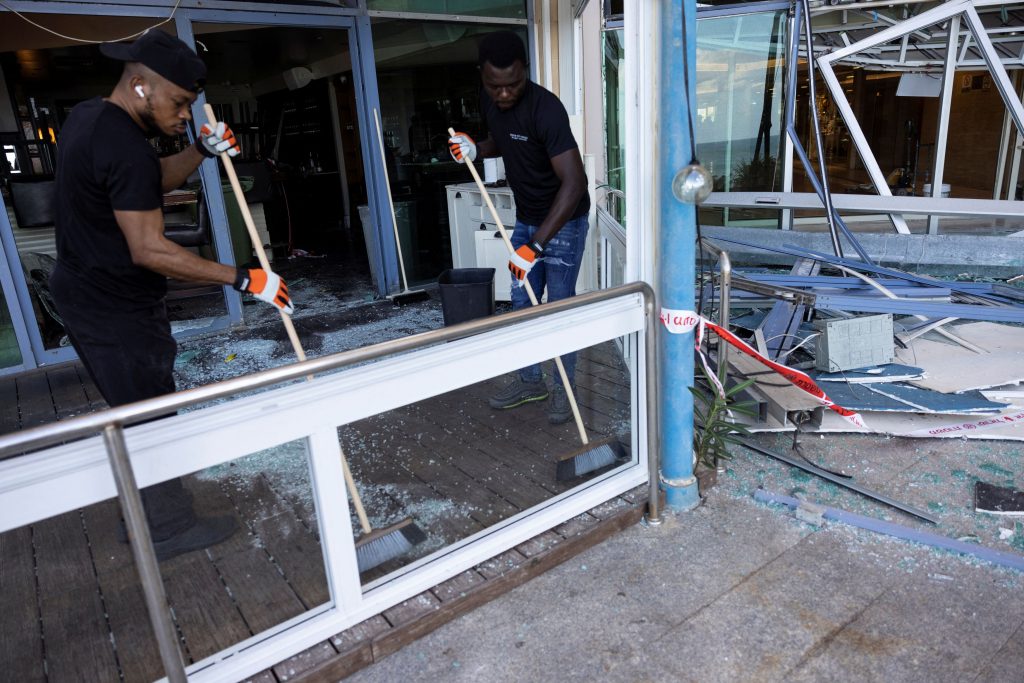
Men clear broken glass in a restaurant which was damaged Iran fired a salvo of ballistic missiles at Israel, in Tel Aviv, Israel, October 2, 2024. REUTERS/Nir Elias
Over the past two weeks, Israel has launched hundreds of strikes targeting Hezbollah leaders and their weapons supply, killing more than 1,600 people in Lebanon and causing nearly a million to flee their homes.
Some current and former Israeli officials called for an aggressive response against Iran. Former Israeli prime minister Naftali Bennett said Israel should launch its own attack to destroy Iran’s nuclear program and its energy facilities, as Tehran and its allies—Hezbollah and Hamas—are weakened.
“Israel has now its greatest opportunity in 50 years, to change the face of the Middle East,” he wrote on X.
Iran has warned that any Israeli retaliation to Tuesday’s attack will be met with “further crushing and destructive acts.”
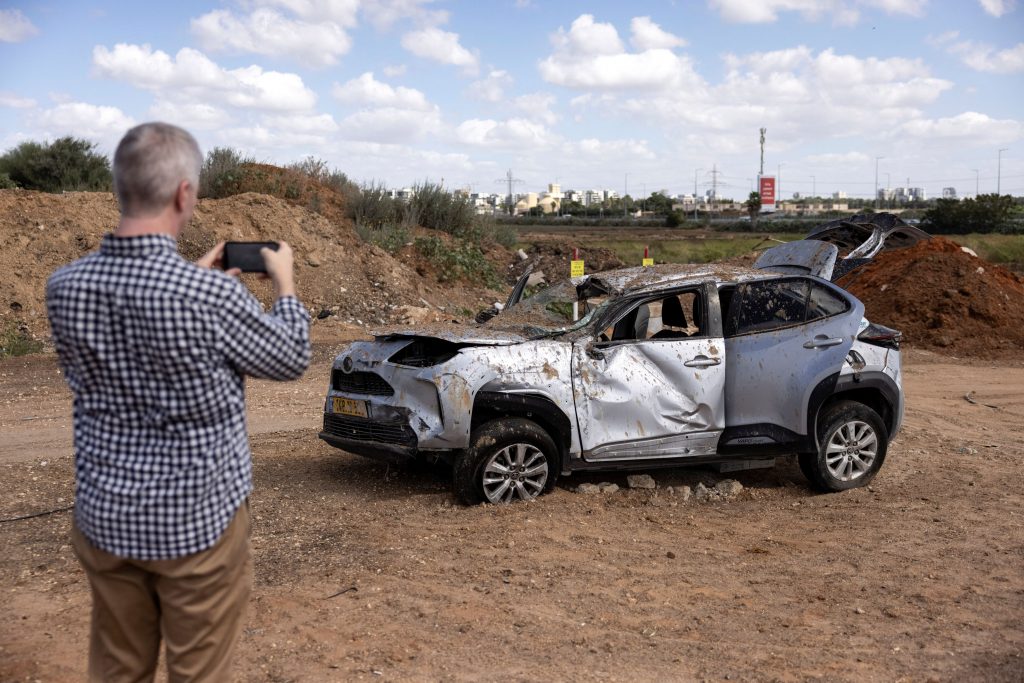
A man takes a picture of a car that was damaged in the area where projectile landed after Iran fired a salvo of ballistic missiles at Israel, in Tel Aviv, Israel, October 2, 2024. REUTERS/Nir Elias
In April, Iran launched its first-ever attack on Israeli soil following Israel’s killing of another senior military commander in an airstrike in the Syrian capital, Damascus. In that attack, Iran fired 120 ballistic missiles, 30 cruise missiles and more than 150 drones, an assault fended off by Israel, the U.S. and other allies.
Iran had telegraphed that attack for days ahead of time, giving Israel and the U.S. time to prepare, whereas Tehran sent a message to Arab officials only on Monday night that it was going to launch an attack this time, The Wall Street Journal reported. A large number of Tuesday’s missiles were intercepted, some of them shot at by American forces in the region, a U.S. defense official said.
Uzi Rubin, the former head of Israel’s missile-defense unit and one of the founders of the country’s air-defense programs, said April’s attack was easier to defend because it involved cruise missiles and drones fired from Iran, giving the Israeli military plenty of warning time. Tuesday’s attack, by contrast, was entirely with ballistic missiles, which arrived from Iran within 15 minutes.
A good interception rate for ballistic missiles is above 80%, he said, which the Israeli military achieved in April. Ultimately, there wasn’t enough information yet to properly assess how effective the Israeli air defenses were, he said.
Israel has three multilayered, overlapping, air-defense systems, most of which were developed alongside the U.S. beginning in the 1980s. The Arrow 3 intercepts long-range ballistic missiles that leave the earth’s atmosphere, while an earlier version of the Arrow is still used for medium-to-long range missile threats. David’s Sling covers short-to-long range missiles, drones and aircraft. The Iron Dome, its most well-known system, specializes in dealing with shorter-range attacks.
Videos online showing projectiles falling on Nevatim base and other areas could have been debris caused by the Arrow 3 interceptor, said Ilan Bitton, a former commander of Israel’s air defenses. Other missiles that exploded could have been allowed to hit open areas to save the cost of using an interceptor, he said.
“We had a very good response by our defense,” he added.
The development of Israel’s aerial-defense systems has mirrored the evolution of Iran’s missile program, which is among the Middle East’s largest and most versatile and operated by the Islamic Revolutionary Guard Corps. The program dates back to before the 1979 Islamic Revolution but accelerated during the country’s war against Iraq in the 1980s.
Iran mostly fired four different types of medium-range ballistic missiles in the attack against Israel, according to Iran’s Fars news agency, which is affiliated with the Revolutionary Guard. The attack included Emad and Ghadr missiles, which were used to attack Israel in April, and two of Iran’s newest and most advanced, Kheibar Shekan and Fattah, the agency reported. All of the missiles have a range of more than 600 miles.
The Kheibar Shekan, or “Breaker of Kheibar,” was introduced in 2022 and invokes a battle between Muslims and Jews in seventh-century Arabia. Iran says both Kheibar Shekan and the Fattah system are designed to avoid aerial-defense systems.
The Israeli military declined to comment on munitions used by Iran.
Write to Dov Lieber at dov.lieber@wsj.com and Rory Jones at Rory.Jones@wsj.com
